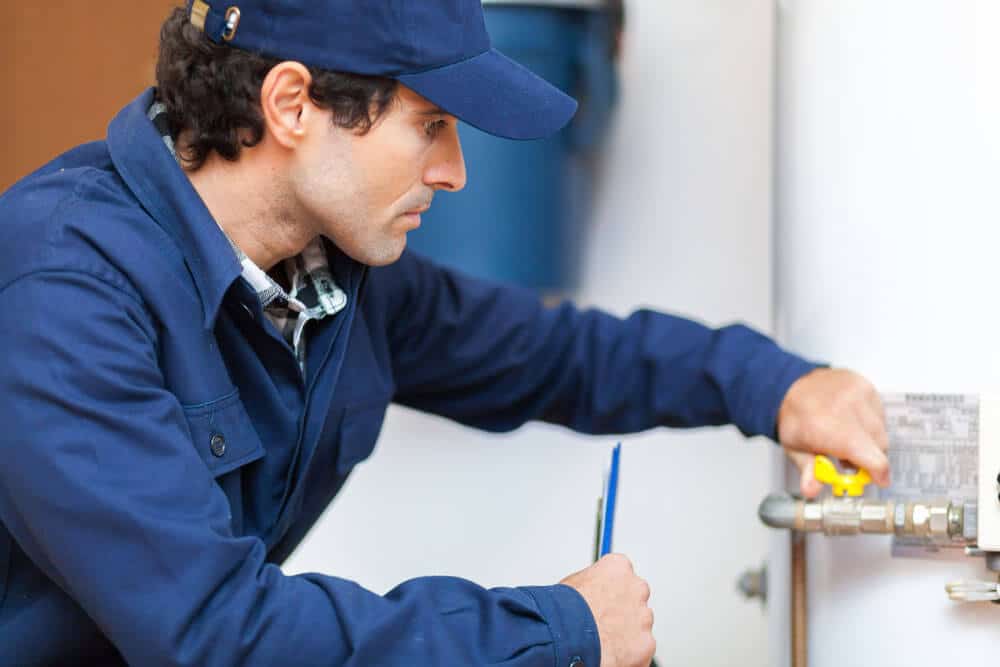The unexpected loss of hot water in your home is one of the most frustrating problems that you can face as a homeowner. Many of us rarely consider the functioning of our hot water heater day-to-day. It’s one of the most important appliances in any home. But as long as there’s hot water coming out of the faucets, the hot water heater tends to remain out of sight and out of mind.
While most hot water heaters have a long lifespan, with an average of 8-15 years, a reliable water heater requires regular maintenance just like every other home appliance.
Treating your hot water heater right will allow you to avoid the need for unexpected emergency hot water heater repair. No one wants to lose hot water in the middle of a shower or on a cold winter day!
Let’s take a look at five important water heater maintenance tips:
Pay Attention to Hot Water Availability and Usage
An important prerequisite for hot water heater maintenance is developing an awareness of your home’s hot water usage and the availability of hot water.
Pay attention to the amount of hot water your household uses for a few weeks and then ask yourself the following questions:
- Does the water heat up slower than it once did?
- Does the hot water run out faster than in the past?
- Does the hot water heater currently provide all of the hot water that my household requires?
- Is my household using a large amount of hot water, given the tank size of my water heater?
Simply having a baseline understanding of your own hot water usage and knowing whether your current water heater is meeting your household’s needs can help you to keep an eye out for warning signs that your hot water heater isn’t working as well as it once did.
If you do need to schedule a repair appointment or even start planning for water heater replacement, knowing early is incredibly helpful.
Additionally, knowing how much hot water your household uses, combined with the knowledge of how long you’ve had your current water heater, will allow you to start considering replacement when appropriate. As noted above, some high-quality water heaters can last over a decade, but strenuous use may result in a reduced lifespan for the appliance.
Check the Functionality of the Pressure-Release Valve
The pressure-release valve is typically located on the top or side of your hot water heater. Because excess pressure can actually result in a tank exploding, the pressure-release valve allows the hot water heater to maintain a safe pressure level as it functions. Making sure that this valve is in good working order is one of the basic steps in water heater maintenance.
Important: Before working on the elements of any appliance, be sure that the circuit breaker is switched off.
To check the pressure-release valve, put a bucket below the discharge pipe in order to catch discharged water. Then, lift the lever on the pressure-release valve to allow water to release. If no water exits the discharge pipe or if your valve leaks when you are testing it, you need to replace the valve.
Replacing the valve involves turning off the flow of water, draining the heater’s tank, and removing the discharge pipe and the old valve. Then simply put sealant tape around the threads of the replacement valve and screw it in, replacing the discharge pipe and turning the water back on.
Test (and Replace) the Heating Elements
Often, heating elements will stop functioning before other mechanical components of your water heater, so testing them and replacing them if necessary is a cost-effective way to maintain your appliance.
Be sure that the circuit breaker for the hot water heater is switched off. Use a non-contact voltage detector to ensure that there is no power running to the unit before you test the heating elements.
In order to test the heating elements of your water heater, you will need a continuity tester. This inexpensive tool detects continuous circuits, indicated with a small lightbulb on the handle.
Remove the two panel covers on the side of your water heater, along with the insulation and plastic covers. Place the clip of the continuity tester on one of the terminals on one of the heating elements and touch the probe to the other terminal. Electricity will not pass through a burned-out element. So, if the light remains dark, the element needs to be replaced.
Be sure to check each terminal on each of the heating elements on your hot water heater to ensure complete functionality.
Insulate the Water Heater and Pipes
Like any physical system, heat will gradually escape from your hot water heater if left unchecked. Insulating the appliance can improve the energy-efficiency of your heater. In fact, insulating your heater can save you up to 16% on your water heating costs.
You can purchase affordable pre-cut wrappings to insulate hot water heaters of various makes and sizes. However, cutting your own insulation for both your heater and pipes is not difficult and can decrease your hot water costs quickly.
Here are a few things to keep in mind when insulating your hot water heater:
- Do not cover the top (vents) of heaters that utilize oil or gas
- Make sure the insulation fits the unit securely, otherwise it will not be effective
- Do not cover any valves, burner elements, or electric panels with insulation
Insulating your water heater is an inexpensive way to make sure you are getting the most out of your appliance.
Drain Sediments Out of your Tank
Over time, the tank on your hot water heater will collect sediments at the bottom. Hard-water areas are particularly prone to the buildup of sediments in tanks. An accumulation of sediment will reduce your heater’s efficiency and result in a shorter lifespan for the appliance, as well as higher hot water costs for you.
When draining your hot water tank, run a faucet on hot at full capacity for about 10 minutes beforehand to reduce the amount of hot water in the tank. Then, after shutting off power to the unit, place a bucket beneath the drain valve output to catch the water. Be careful when opening the valve, as the water may still be hot.
Open the valve slowly and drain around 2-3 gallons of water or keep draining until the water runs clear and there are no further signs of sediment. Then refill the tank and reinstate power to the heater.
As with all appliances, regular maintenance of your hot water heater prolongs the lifespan of your unit and helps you avoid the need for replacement or emergency water heater repair.
Professional Water Heater Repair in Charlotte, NC
For those cases where basic maintenance is not enough, call the premier professional team for water heater repair in Charlotte. The expert technicians at Superior Plumbing & Drains, LLC are available 24/7 for any water heater needs that arise. Reach out to us online or call us at (704) 289-6858 if you live in the Monroe/Charlotte area or (704) 813-2888 if you live in the Gaston area for the highest quality water heater repair in Charlotte, NC.









